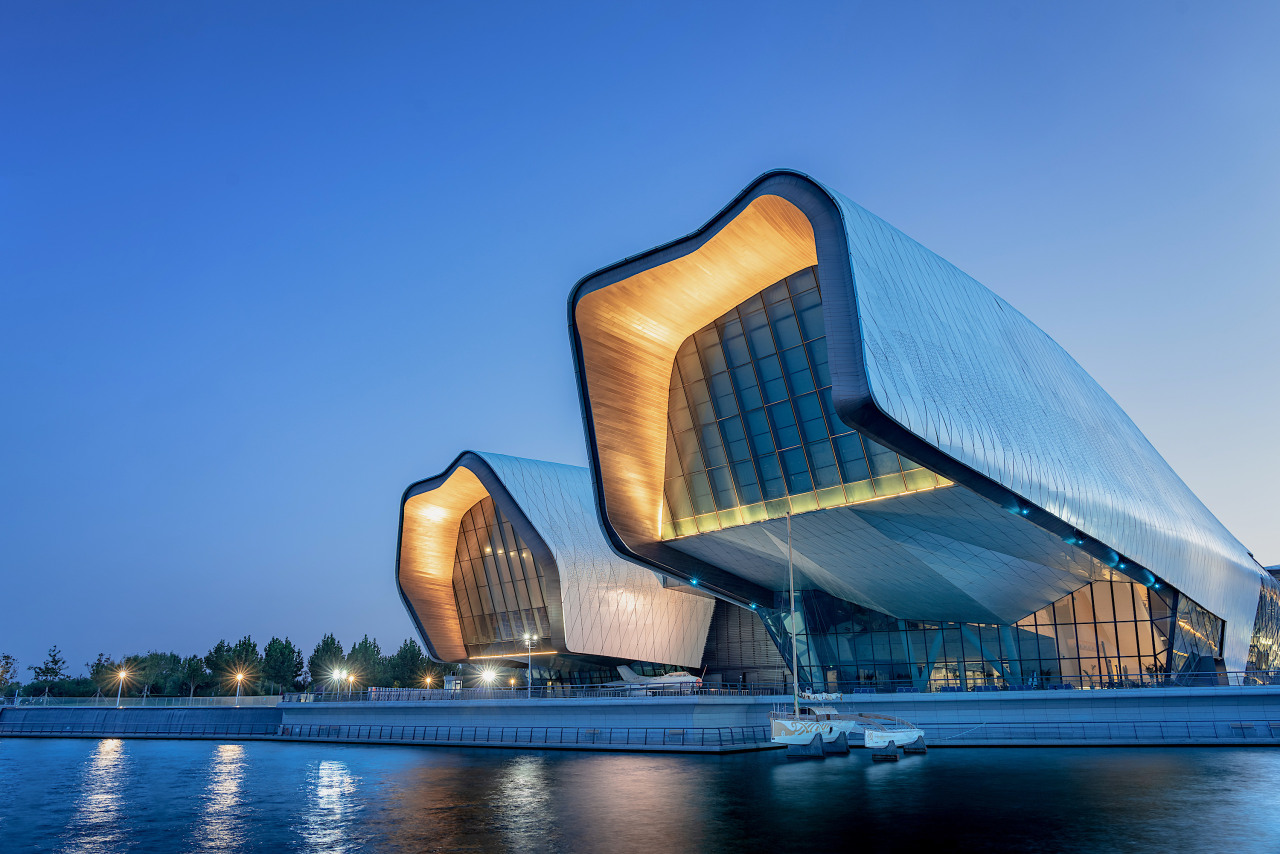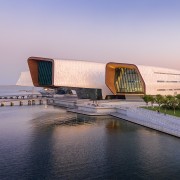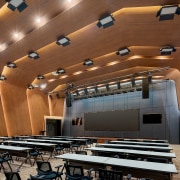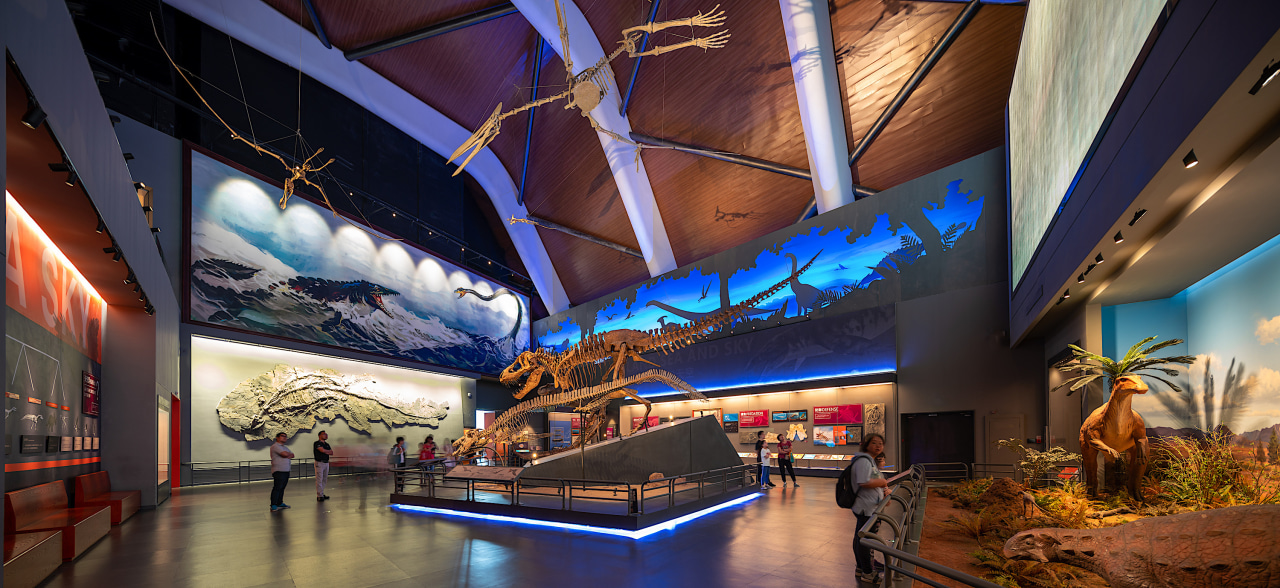An open gesture from China to the maritime world
Reaching out – the imaginative National Maritime Museum of China is a product of a strong architectural vision from Cox Architecture and ground-breaking digital modelling
Designed by Cox Architecture
From the architects:
China's first National Maritime Museum has commenced formal operation, the culmination of a 6-year process that began with an international design competition, followed by an intensive design and construction process.
The Museum has a distinctive form that reaches out into the bay from a large waterfront parkland. Behind the parkland, a new city district of Tianjin is being developed – the Binhai New Area.
A landmark project, the museum comprises four wings, focusing on the themes of "the ancient ocean", "ocean today", "journey of discovery" and "the age of the dragon".
The three-storey museum, covering 80,000m², is made up of six display areas and 15 exhibition halls.
The halls are interconnected so visitors have the opportunity to understand and interpret China’s maritime evolution in relation to events in Europe, America, and wider Asia.
Cox Architecture was awarded the project in 2013 after winning an 8-month iterative design competition.
The building comprises a series of interconnected pavilions that cantilever out over the water in a ‘fan-like’ formation from a central reception hall.
This central space is both for transition and exhibition and provides access to the upper of the two exhibition levels.
On the lower level, stores for non-exhibited collections are co-located on-site to enable artefacts to be easily distributed to each of the adjacent exhibition spaces.
From Philip Cox’s initial watercolour sketches, the design evolved and certain compelling metaphors were either resolved or emerged – jumping carp, corals, starfish, moored ships in port and an open palm reaching out from China to the maritime world.
Without resorting to literal mimicry, some are more obviously expressed, such as in the geometric pattern and textures of the cladding, also functionally designed to shed heavy snow loads during harsh winters typical in this part of China.
The articulated pavilions provide a constant connection between inside and out.
The user experience exists within the landscape and is a key organising device of the plan, helping to orientate visitors on their journey experience.
During development of the design, both physical and digital modelling was carried out to test the building structure and many of the key details of the design. This greatly improved the quality of outcomes and assisted communication beyond any language barriers.
The process was innovative in its deployment of parametric computer modelling that allowed both scale and detail to be resolved concurrently. And this was particularly ground-breaking for a project of this size, scale, complexity and location.
Physical models focused on human scale and interaction while complex geometric algorithms resolved the doubly curved building ‘shell’ and its related cladding system.
Energy for the building is predominantly geothermal, being drawn from 100m below the building.
The National Maritime Museum of China is justified in its ‘landmark’ status…it is a remarkable building, borne of a remarkable process.
It is a project that’s totally at home on the global stage. It is testament to the commitment of our open-minded and collaborative client and to our team, whose talent and tenacity in equal measure ensured this building stayed true to its vision in every possible detail.
In terms of scale alone the project is arresting – when compared with the size of the Sydney Opera House the NMMC is two and a half times larger in terms of both length and site area.
And the construction scale tells its own story.
The museum includes 55,000m² of aluminium façade and 3,500m² of glazed façade.
And the façade is 828mm thick – to accommodate the aluminium façade, the rain screen, the standing seam, insulation, the interior lining and any substructure within that.
Plus a staggering 17,000 tonnes of steel was used for the primary structure alone, not including the secondary structure.
The largest structural cantilever is al spectacular 42m in length.
One of the challenges we had was that because this building is curved there's no defined wall and ceiling. This was a challenge because building Codes in China refer to walls having B-grade fire rating and ceilings that should have a higher, A-grade rating. Because of the curvature it wasn’t possible to define where the walls stopped and the ceiling started, so everything had to be the highest grade in fire rating.
Technology was to the fore when creating the giant museum/landmark.
Revit, Rhino and BIM played a huge role in coordinating and delivering this project. It resulted in the biggest digital model Cox Architecture has ever worked with.
The design solution includes giant seismic portals, each resting on massive ball joints that are designed to move when there’s seismic disruption in the landscape.
There is also siphonic drainage built literally into the ‘skin’ of the building. This was difficult to achieve because of the museum’s organic form. The out-of-sight drainage captures grey water for future use on site over the dry months.
The vast roof is arrayed with high efficiency solar panels, creating a ‘solar farm’. This, in addition to the thermal underground heating, warms the building during the harsh Tianjin winter and on cooler days.
Credit list
Client
Local design institute partner:
Awards
Architect
Key consultants
Story by: Trendsideas
Photography by: Terrence Zhang
Home kitchen bathroom commercial design
Diving into nature
Classic looks, contemporary efficiency
Personality plus



















